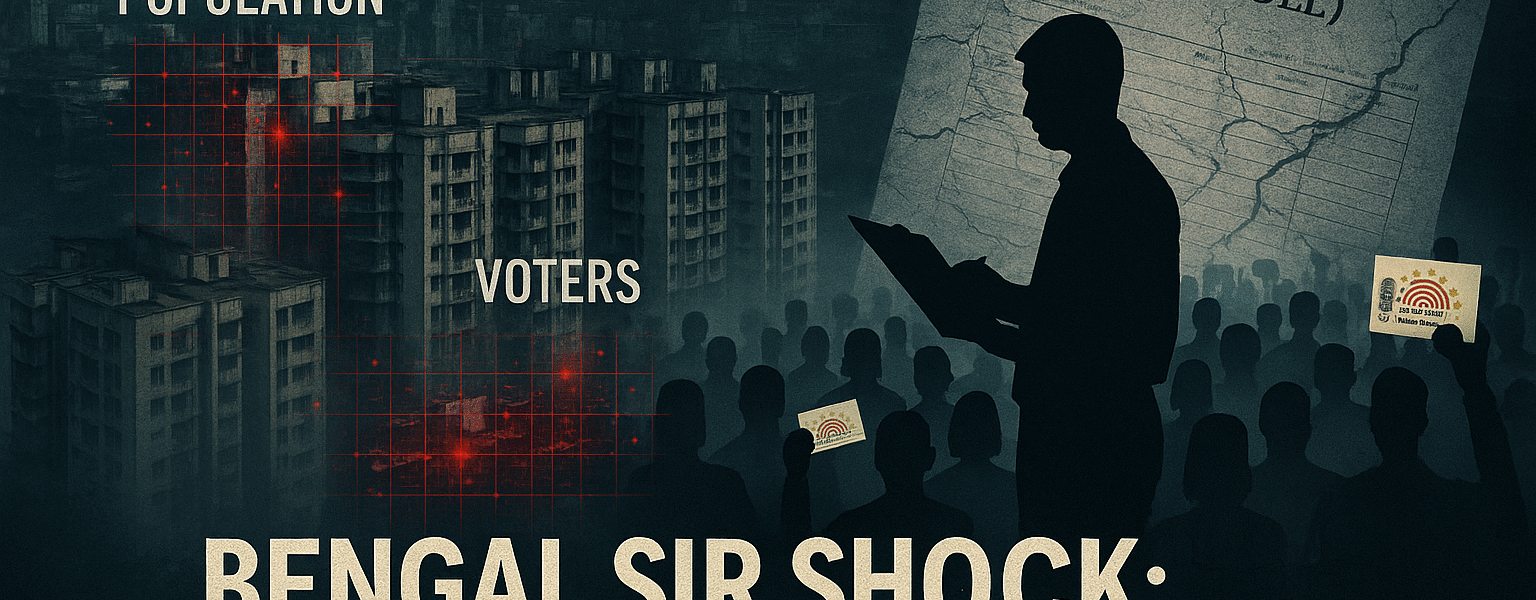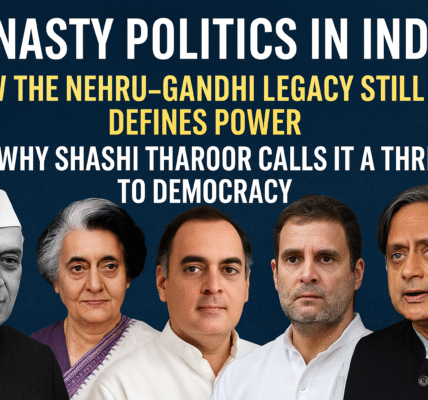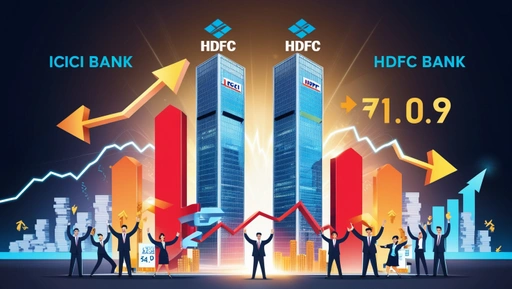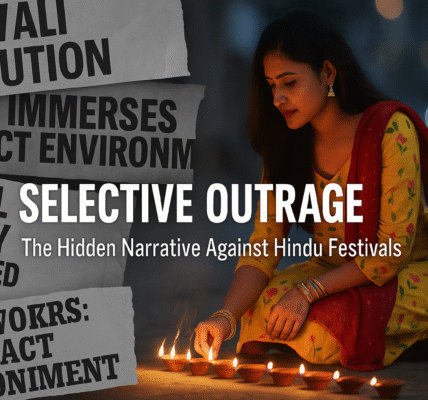SIR Shocker in Bengal: Gulshan Colony Exposes Massive Voter–Resident Mismatch and Thousands of Suspected Illegal Residents
Booth-Level Shock in Kolkata’s Gulshan Colony: SIR Drive Exposes a Massive Voter–Resident Mismatch
Kolkata’s Gulshan Colony, a dense, vertical sprawl of mid-rise buildings in Ward 108 of the Kolkata Municipal Corporation, has suddenly become the most talked-about pin on West Bengal’s voter-roll map.
As Booth Level Officers (BLOs) fan out under the Election Commission of India’s (ECI) Special Intensive Revision (SIR) of electoral rolls, their early findings from this one neighbourhood point to a staggering mismatch between the number of people living there and the number of legally registered voters.
Local field reports and television coverage suggest that in a colony with an estimated 2 lakh residents, only around 20,000 people are currently on the voter list—barely 10% of the population.
This raises uncomfortable questions:
Who are the remaining 90%?
How did such a gap build up over years?
And what does this mean for the larger debate on “illegal voters” and undocumented residents in Bengal?
What SIR Is Doing on the Ground – and Why Bengal Is Under the Microscope
The Special Intensive Revision (SIR) is a nationwide, door-to-door overhaul of electoral rolls ordered by the Election Commission, covering 12 states and Union Territories in its current phase, including West Bengal.
Unlike the routine annual summary revision, SIR requires every existing voter to re-submit an enumeration form and be linked, as far as possible, to entries in the 2002 rolls – treated as the “gold-standard” baseline.
In Bengal, the scale is massive:
- 7.6 crore voters are targeted for verification.
- Enumeration began on 4 November 2025 and is scheduled to run till 4 December 2025, with final rolls expected by February 2026.
- As of this week, the state has already reached over 80% of the enumeration forms distributed, though Kolkata North is lagging at the bottom.
Bengal is under especially intense scrutiny because:
- A study cited in local media has estimated that around 1 crore “excess voters” are on the state’s rolls.
- Union minister and BJP MP Shantanu Thakur has publicly claimed that SIR could lead to the deletion of about 1.2 crore “illegal voters”—a claim fiercely rejected by the ruling Trinamool Congress (TMC), which calls the exercise a political weapon.
- The Congress and other parties have challenged aspects of SIR in court, and the Supreme Court has sought the ECI’s response on pleas concerning West Bengal and Tamil Nadu, asking high courts not to run parallel proceedings.
Against this charged backdrop, what BLOs are reporting from Gulshan Colony has become a lightning rod.
West Bengal SIR Exposes Fake ID Network: Bold Step to Clean Bengal’s Democracy
Gulshan Colony: High-Rise Towers, Thin Voter List
TV9 Bangla reporters accompanying BLOs into Gulshan Colony describe it as an urban maze: around 2,000 multi-storey buildings, mostly 5–6 floors high, with 5–6 flats per floor, packed into a handful of polling parts under one booth.
Yet, despite this physical density, one booth they visited had only about 1,600 registered voters on the list. Across the entire colony, the estimated human population is around 2 lakh, but the number of registered voters is closer to 20,000.
BLOs quoted in these reports say:
- In many buildings, they struggle to find even a single listed voter on an entire floor.
- Residents often present Aadhaar cards and other documents, insisting they should be on the rolls, but their names do not appear in the linked 2002-era databases.
- Some BLOs have reportedly faced pressure and threats—from demands to “add names because Aadhaar exists,” to alleged intimidation with guns or cash offers in parts of Gulshan Colony, Park Circus and Kasba.
Media House summarises the situation in stark terms: “Around 90% of the residents are not local voters” in Gulshan Colony, even though many have lived there for years.
On social media, BJP leaders and aligned accounts amplify this further, portraying Gulshan Colony as a hub of “outsiders” or “illegal infiltrators” who allegedly hold Indian IDs but do not qualify as voters of that constituency.
These are political claims, not official conclusions. The Election Commission has not yet released any formal, consolidated data for the colony; all figures are based on on-ground reporting and statements by political actors.
Aadhaar vs Citizenship: Why “Lakh Aadhaar Cards” Do Not Automatically Mean Legal Voters
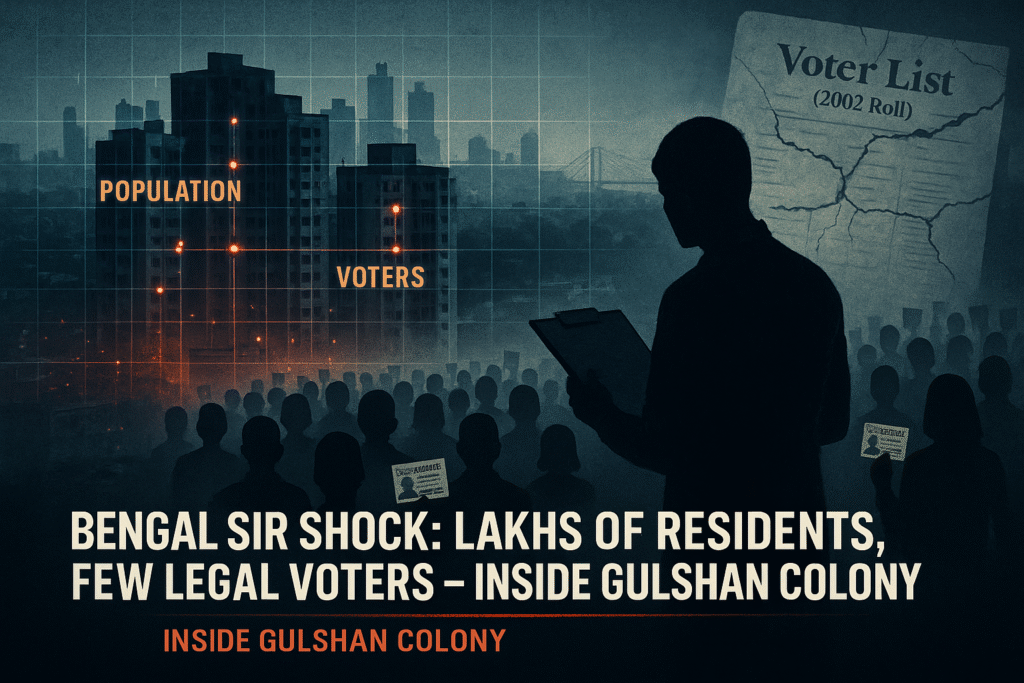
A central thread running through the Gulshan Colony narrative is the gap between Aadhaar possession and legal voter eligibility.
Multiple reports from Kolkata say BLOs are being pressured to enrol people “because they have Aadhaar,” even when their linkage to the 2002 electoral roll or other citizenship documentation is unclear.
However, both the Election Commission and UIDAI have repeatedly and very clearly stated:
- Aadhaar is only proof of identity and address – it is not proof of citizenship or domicile.
- The Aadhaar Act, 2016 (Section 9) explicitly says that the Aadhaar number or its authentication **“shall not, by itself, confer any right of, or be proof of, citizenship or domicile.
- The Supreme Court and subsequent government clarifications have also stressed that Aadhaar cannot be treated as conclusive proof of date of birth or nationality.
In the Bihar SIR case, the Election Commission told the Supreme Court that Aadhaar is being accepted only as an identity document, not as citizenship proof—a principle that now informs SIR in Bengal as well.
So the situation in Gulshan Colony can be summarised as follows:
- Many residents reportedly have Aadhaar and even other IDs.
- But citizenship and local voter eligibility must still be independently verified against older electoral rolls and other documents.
- If that linkage fails, BLOs are legally bound to record them as non-voters for that constituency, regardless of Aadhaar.
That is why, in a colony where “lakhs” of people may hold some form of ID, only a fraction may emerge as “legal electors” in the final SIR roll.
Beyond Gulshan: How Big Is the “Outsider” Problem in Bengal?
No official consolidated figure yet exists for how many non-citizens or ineligible voters SIR has identified in Bengal. But we can see the contours of the debate from different directions:
1. Political claims of excess or “illegal” voters
- The 1 crore “excess voters” estimate from a study cited in local media is often used to justify SIR in Bengal.
- BJP’s Shantanu Thakur has put a number on it—1.2 crore “illegal voters” that he says could be deleted—while the TMC accuses the BJP of trying to disenfranchise minorities and refugees.
These are highly contested, political numbers, not yet validated by the Election Commission.
2. “Reverse migration” and fear among undocumented residents
National television channels and digital platforms have aired footage of people in New Town and other parts of Bengal admitting on camera to being Bangladeshi nationals, expressing fear that SIR might expose their status and trigger deportation or loss of benefits.
This suggests that undocumented foreign residents do exist in significant pockets, though their total number is unknown.
3. Anomalies where genuine voters go missing
SIR is not just unearthing suspected non-citizens; it is also throwing up serious discrepancies that could harm legitimate voters.
In Guma (North 24 Parganas), for instance, residents have discovered that an entire booth (No. 159) with 842 voters has vanished from the 2002 SIR rolls hosted on the EC website; 71 names from another booth are also missing. Locals fear that this could lead to them being wrongly tagged as “illegal immigrants” purely because the historical data is incomplete.
The state Chief Electoral Officer has ordered reports from district officials to address the anomaly.
Pressure, FIRs and the Human Cost for BLOs
The frontline of SIR is not in air-conditioned control rooms—it is at the doors of BLOs:
- The Election Commission has already served show-cause notices to eight BLOs in West Bengal for distributing forms from tea stalls and clubs instead of going door-to-door, warning that such shortcuts could compromise the integrity of SIR.
- FIRs have been filed against at least five Booth Level Agents (BLAs) of political parties for allegedly obstructing BLOs.
- In Kolkata, BLOs have written to the Chief Electoral Officer seeking additional security, alleging threats, bribe offers, and pressure to include names based solely on Aadhaar in areas including Gulshan Colony, Park Circus and Kasba.
National-level EC teams have reportedly made it clear during briefings that BLOs will face stringent action if they knowingly allow “fake” or ineligible voters on the list, adding to the stress on the ground.
EC’s Assurance: “No Genuine Voter Will Be Dropped”
Amid rising anxiety, the Election Commission and Bengal’s Chief Electoral Officer have tried to draw a clear line:
- “No valid/genuine voter will be removed during SIR in Bengal,” the CEO has repeatedly said, stressing that there will be proper hearings and an appeals process.
- The EC has deployed QR-coded forms, digital matching with 2002 data, and AI-based tools to reduce manual errors and improve transparency.
- In Bihar, the Supreme Court has already underscored that while Aadhaar can be used as an ID document in SIR, it cannot be the basis for deciding citizenship, a principle now shaping Bengal’s revision as well.
In other words, Gulshan Colony-style mismatches are not, by themselves, proof that lakhs of “illegal citizens” exist; they are flags that trigger a deeper verification cycle—hearings, document checks, and appeals.
How Grave Is the Gulshan Colony Gap—And What It Tells Us
Even with all caveats, the emerging picture from Gulshan Colony is extraordinary:
- Resident–voter gap of roughly 10:1 in a dense urban pocket is far beyond what one would expect from normal demographic churn.
- Media reports suggesting that 80–90% of residents are “outsiders” to that constituency’s voter list indicate a massive concentration of people who either:
- are not citizens,
- are citizens registered elsewhere, or
- have never been properly enrolled.
From a democracy and security perspective, this has three big implications:
- Distorted Representation
If large pockets of a city house tens of thousands of non-voters, the political weight of that area on paper is far smaller than its real population, affecting resource allocation, infrastructure planning, and enforcement priorities. - Risk of Identity & Document Fraud
Reports from other states and central agencies show how identity documents—especially when misused—can be leveraged by undocumented migrants or criminal networks to access welfare, banking, or even political influence. - Double-Edged Sword for Citizens
The same SIR that may detect ineligible voters can also wrongly strip genuine citizens of their right to vote if historical records are incomplete (as in Guma) or if documentation is weak among poorer, less literate populations.
In that sense, Gulshan Colony is both a symptom and a stress test:
- Symptoms of long-running gaps in how urban migration, border-state demographics and citizenship documentation have been handled.
- Stress test of whether SIR can separate “illegal” from merely “informal” or “poorly documented” residents without trampling rights.
Where Things Stand Now – and What to Watch Next
As of mid-November 2025:
- SIR enumeration is ongoing: BLOs will continue house-to-house verification in Bengal until early December.
- No final list for Gulshan Colony has been published. All numbers are preliminary, media-reported and politically contested.
- Multiple petitions challenging aspects of SIR are pending, and the Supreme Court has clubbed related cases from different states, putting the process under constitutional scrutiny.
- The ECI insists that:
- Genuine voters will have multiple chances—enumeration, claims & objections, and appeals—to prove eligibility.
- Aadhaar and similar documents will be used only for identity, not as citizenship proof, in line with recent national clarifications.
What comes next will depend on:
- How many names are finally deleted or added when Bengal’s new rolls are published in early 2026?
- Whether Gulshan Colony remains an exceptionally skewed case, or similar patterns are officially acknowledged in other pockets like Park Circus, Khidderpore, Kasba and border districts.
- How courts balance electoral integrity against the risk of mass disenfranchisement in a state already marked by high migration and political polarisation.
For now, Gulshan Colony is an early warning flare from the SIR frontlines—a signal that the gap between who lives in Bengal and who votes in Bengal may be far larger, and far more complex, than anyone publicly admitted before.
SIR Bengal findings, Gulshan Colony voter list, illegal voters in Bengal, Aadhaar not citizenship, West Bengal SIR investigation, Kolkata illegal residents, voter-resident mismatch, Electoral rolls verification, BLO findings Gulshan Colony, outsiders in Kolkata, 2002 electoral roll linkage, West Bengal voter fraud, Bengal illegal immigration, SIR voter verification drive
Discover more from
Subscribe to get the latest posts sent to your email.

